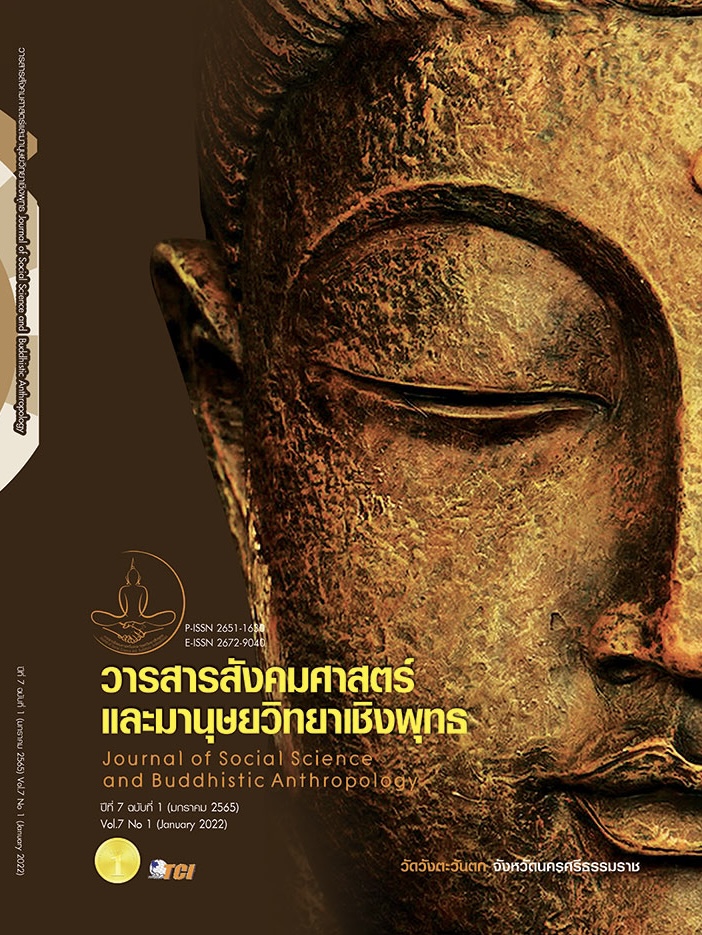A COMPARATIVE STUDY OF RESTAURANT NAMING IN MUANG CHIANG MAI AND FUZHOU CHINA
Keywords:
Restaurant naming, Chiang Mai, Fuzhou, China, StyleAbstract
The objectives of this research article were to study and compare language characteristics, society, and culture in restaurant naming in Muang, Chiang Mai District and Fuzhou City, China by applying stylistic approach. The results revealed that the language for restaurant naming in Muang, Chiang Mai District is less complicated than the name in Fuzhou City, China in terms of linguistic structures, semantic elements, and linguistic strategies. Firstly, the linguistic structures consisted of words, phrases and sentences, and most restaurant names were realized mostly by noun phrases. Additionally, the restaurant name in Muang, Chiang Mai District realized by the noun phrases features mostly a head followed by a modifier with the maximum number of two modifiers, but most of the noun phrases in Fuzhou City, China comprised of a modifier followed by a head, which is the structure of the Chinese grammar with the maximum number of three modifiers. Secondly, the semantic elements contain both direct and indirect meanings. The direct meaning names of restaurants in Muang, Chiang Mai District were utilized mainly than the names in Fuzhou City, China. Thirdly, for the linguistic strategies, the primary strategy deployed in restaurant naming in Muang, Chiang Mai District and Fuzhou City, China is metonymy. Moreover, it was found that the restaurant naming in Muang, Chiang Mai District used less linguistic strategies than in Fuzhou City, China. In case of the aspect of society and culture, the analysis indicated that most of the restaurant naming in Muang, Chiang Mai District focused on locality while the restaurant names in Fuzhou City, China related to prosperity.
References
คณะกรรมการสืบค้นประวัติศาสตร์ไทยในเอกสารภาษาจีน สำนักเลขาธิการนายกรัฐมนตรี. (2543). เกณฑ์การถ่ายถอดเสียงภาษาจีนแมนดารินด้วยอักขรวิธีไทย. กรุงเทพมหานคร: มหาวิทยาลัยธรรมศาสตร์.
ราชบัณฑิตยสภา. (2560). พจนานุกรมศัพท์ภาษาศาสตร์ (ภาษาศาสตร์ทั่วไป) ฉบับราชบัณฑิตยสภา. (พิมพ์ครั้งที่ 1). กรุงเทพมหานคร: เอบิช อินเตอร์กรุ๊ป จำกัด.
สุภัทรา โยธินศิริกุล. (2561). การศึกษาชื่อร้านทองคำภาษาจีนของชาวไทยเชื้อสายจีนในกรุงเทพมหานคร. วารสารภาษา ศาสนา และวัฒนธรรม, 7(2), 202-230.
สุภัทรา โยธินศิริกุล. (2563). ภาษาบนป้ายชื่อร้านค้าชาวไทยเชื้อสายจีนในเขตชุมชนเยาวราช: กรณีศึกษาชื่อร้านค้าภาษาจีนและภาษาไทย. มนุษยศาสตร์สาร, 21(1), 55-74.
สุวรรณา ตั้งทีฆะรักษ์. (2557). การศึกษาเปรียบเทียบความหมายของชื่อร้านค้าที่สะท้อนความเชื่อเกี่ยวกับสิริมงคลของคนไทยและคนจีน. วารสารสถาบันวัฒนธรรมและศิลปะ, 15(2), 45-57.
อมรา ประสิทธิ์รัฐสินธุ์. (2544). ภาษาศาสตร์สังคม. กรุงเทพมหานคร: โรงพิมพ์แห่งจุฬาลงกรณ์มหาวิทยาลัย.
Benjamin, W. (1986). Illuminations. New York: Schocken Books.
Genette, G. (1997). Palimpsests: Literature in Second Degree. Channa Newman and Claude Doubinsky (trans) Lincoln. London: University of Nebraska.
Lakoff, G. & Johnson, M. (1980). Metaphors we live by. Chicago: University of Chicago.
Leech, G. N. & Short, M. H. (1981). Style in Fiction: A Linguistic Introduction to English Fictional Pross. London: Longman.
候晓红. (2017). 西安市饭店名称的语言与文化分析. 西安: 西安外国语大学.
Downloads
Published
How to Cite
Issue
Section
License
Copyright (c) 2022 Journal of Social Science and Buddhistic Anthropology

This work is licensed under a Creative Commons Attribution-NonCommercial-NoDerivatives 4.0 International License.








